Are you tired of tossing and turning in bed, unable to find relief from the uncomfortable sensations in your legs? You’re not alone! Restless Legs Syndrome (RLS) affects many people, but the good news is that there are ways to manage the symptoms and improve your quality of life.
In this article, we’ll dive deep into the world of restless legs syndrome, exploring its causes, symptoms, and treatment options. So grab a comfy seat, and let’s get started on the journey to better sleep and happier legs!
Key Takeaways
- RLS affects up to 10% of the US population and can cause disruptive sensations & an urge to move.
- RLS risk factors include genetics, medical conditions, medications/substances & lifestyle habits.
- Treatment involves medication management, lifestyle changes/home remedies, alternative therapies, and coping strategies/support.
Understanding Restless Legs Syndrome (RLS)
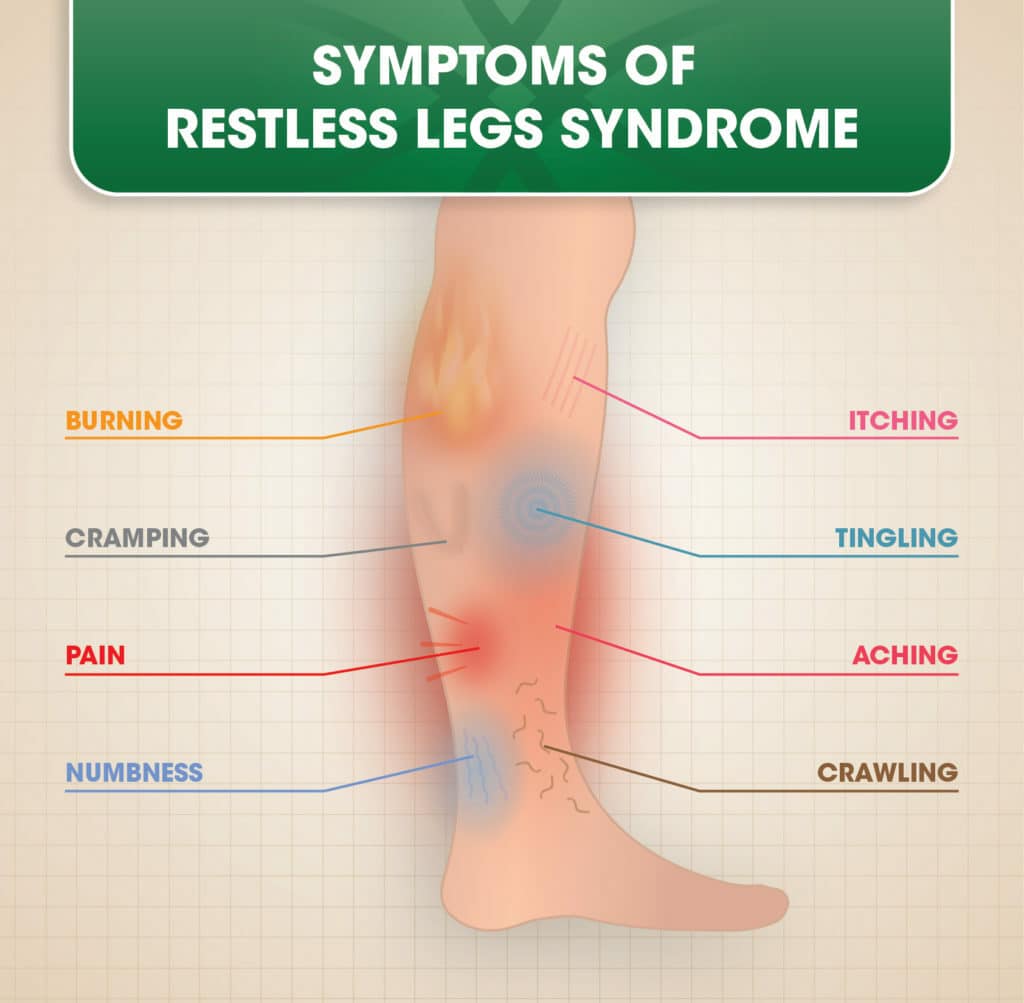
Restless Legs Syndrome (RLS), also known as Willis-Ekbom Disease, is a neurological sleep disorder that disrupts sleep and overall quality of life. It affects around 7-10% of the US population, causing uncomfortable sensations and an irresistible urge to move the legs, especially during periods of inactivity or relaxation. The condition can strike anyone, regardless of age or gender, though it is more common after age 50.
Though often confused with Periodic Limb Movement Disorder (PLMD), RLS is distinct in that the uncomfortable sensations and muscle movement are accompanied by an irresistible urge to move, whereas PLMD involves involuntary limb movements without the uncomfortable sensations.
Disrupted sleep at night, a common effect of RLS, often results in daytime sleepiness, which could be a sign of a sleep disorder.
Symptoms of RLS
The main symptoms of Restless Legs Syndrome include uncomfortable sensations in the legs, an overwhelming need to move, and symptoms getting worse when you’re resting or at night. These sensations can be described as creeping, crawling, pulling, or even painful, and they are often accompanied by an irresistible urge to move the legs to relieve the discomfort. The symptoms usually intensify during the evening and night, often disappearing in the morning, allowing people with RLS to fall asleep more easily at that time.
Substances like alcohol, caffeine, and nicotine have been found to exacerbate RLS symptoms. Similarly, periods of inactivity or relaxation might serve as a trigger for symptom onset. Restless Legs Syndrome can significantly impact sleep, leading to chronic sleep deprivation, and consultation with a sleep medicine specialist can help in diagnosing and treating RLS.
Causes of RLS
The exact cause of Restless Legs Syndrome remains unknown, but it is believed to be linked to dopamine regulation in the basal ganglia of the brain and low iron levels. Dopamine-increasing drugs have been found to help relieve RLS symptoms, suggesting a connection between the condition and the brain’s chemical messengers.
In some cases, RLS may be associated with other medical conditions or lifestyle factors such as:
- Sleep disorders
- Alcohol consumption
- Smoking
- Caffeine intake
- Iron-deficiency anemia
- Kidney failure
Risk Factors and Associated Conditions
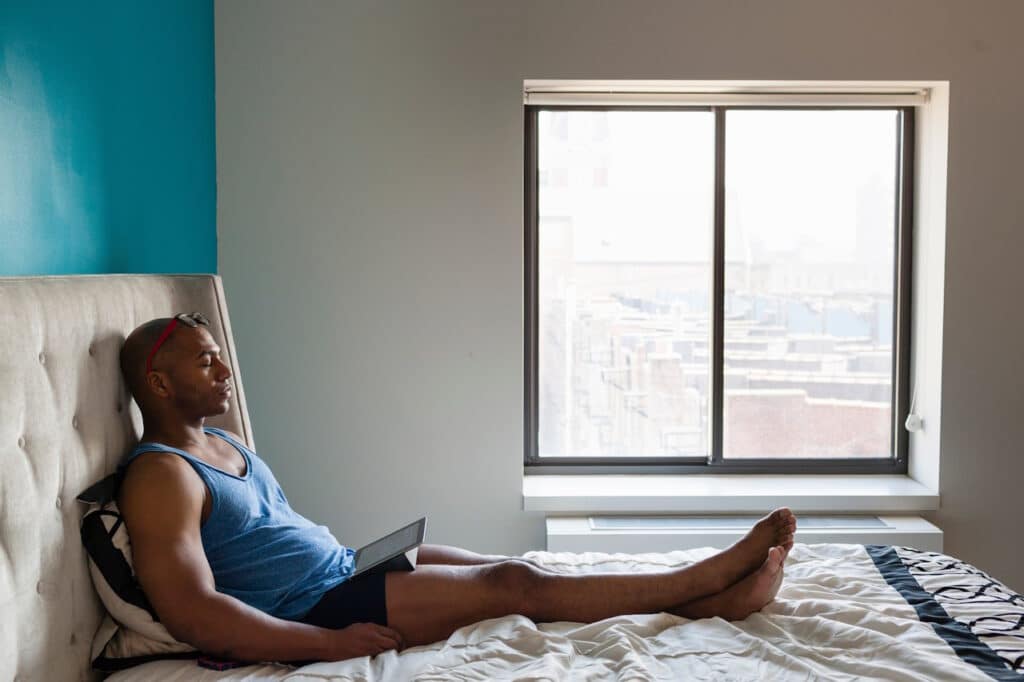
A multitude of factors, such as genetic predispositions, concomitant medical conditions, and specific medications or substances, can affect Restless Legs Syndrome. Understanding these risk factors and how they interact with RLS can help patients and healthcare providers develop more effective treatment plans tailored to individual needs.
In some cases, severe RLS symptoms may be associated with a stronger genetic component, suggesting that there may be inherited factors at play. Medical conditions such as iron deficiency, kidney failure, and pregnancy can also contribute to RLS, as can certain medications and substances like antidepressants, caffeine, and alcohol. It is important to address these underlying causes, especially if they lead to severe symptoms.
Genetic Factors
Restless Legs Syndrome often runs in families, with up to 70% of the risk potentially attributed to genetic factors. Many people with RLS have a parent, sibling, or child with the same condition, suggesting a strong genetic component in the development of the disorder.
Researchers have identified some genetic changes, such as those in the MEIS1 region, that could increase the risk of developing RLS. However, the exact nature of the relationship between genetics and RLS remains unclear, and further research is needed to fully understand the role of genetics in the development and progression of the condition.
Medical Conditions
Certain medical conditions can contribute to the development or worsening of Restless Legs Syndrome. Iron deficiency, for example, can cause anemia, which can lead to fatigue and other symptoms that might exacerbate RLS. Similarly, kidney failure can also cause anemia and contribute to the development of RLS.
Pregnancy is another factor that can temporarily trigger RLS, with about 20% of women experiencing symptoms during pregnancy, usually around the third trimester when symptoms occur. In most cases, RLS symptoms resolve after the baby is born, suggesting a temporary hormonal or physiological link between pregnancy and the condition.
Medications and Substances
Certain medications and substances might exacerbate RLS symptoms, necessitating careful consideration of their potential impact. Some medications that have been found to exacerbate RLS symptoms in some individuals include:
- Antidepressants
- Antipsychotics
- Anti-nausea medications
- Cold/allergy medications
It is important to be aware of these potential triggers and consult with a healthcare professional if you have RLS and are taking any of these medications.
Additionally, lifestyle factors and habits, such as excessive caffeine, alcohol, and nicotine consumption, can not only worsen symptoms but also make symptoms worse and should be carefully managed to alleviate RLS discomfort.
Diagnosing Restless Legs Syndrome
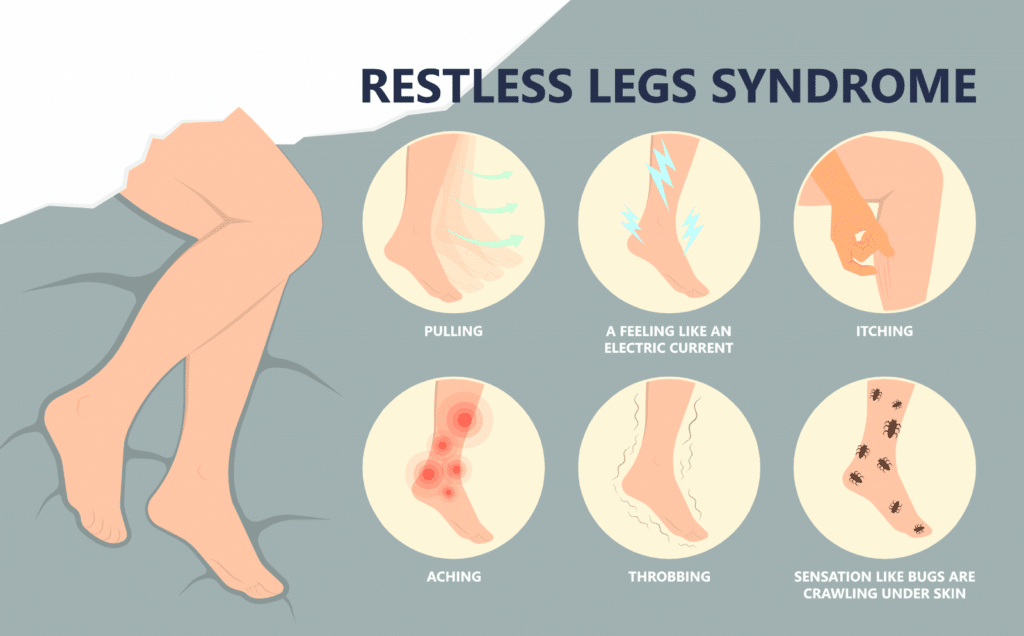
Diagnosing Restless Legs Syndrome involves a thorough evaluation of a patient’s symptoms and medical history. Once RLS is diagnosed, the presence of RLS and the exclusion of other potential symptom causes can be determined through a neurological and physical exam, coupled with an in-depth examination of medical and family history.
Blood tests, capable of identifying underlying medical conditions like iron deficiency or kidney failure that could contribute to RLS symptoms, hold a crucial role in the diagnostic process. By addressing these underlying conditions, healthcare providers can develop a comprehensive treatment plan tailored to the individual needs of each patient.
Treatment Options for RLS
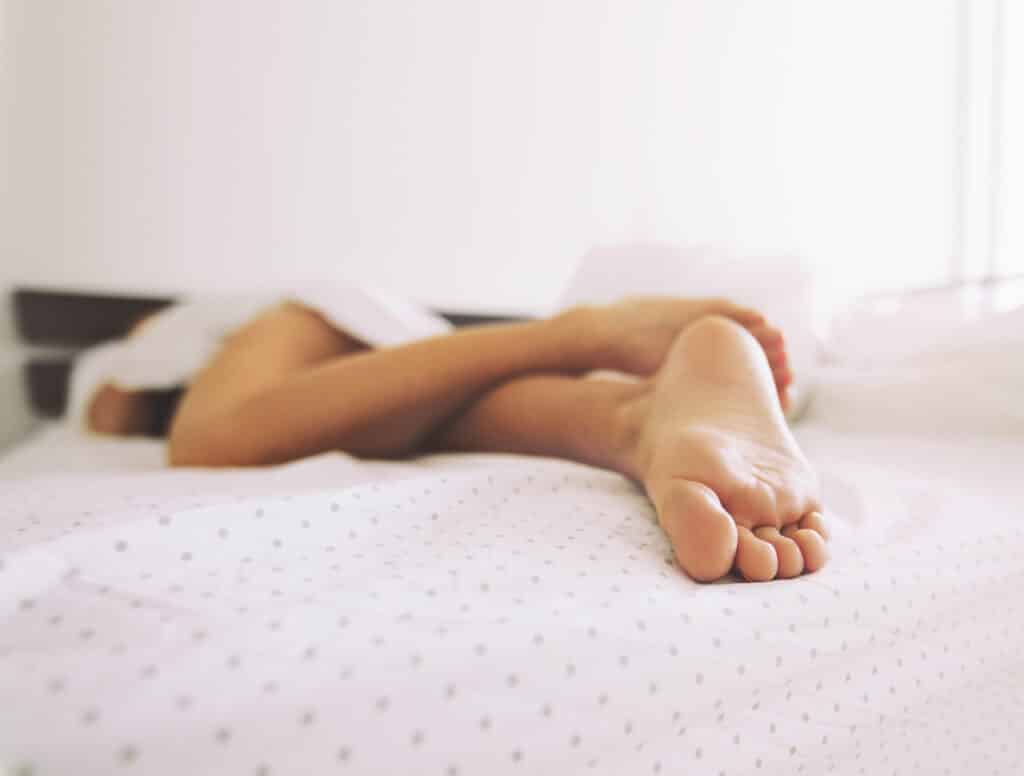
Treatment options for Restless Legs Syndrome are diverse and can include medication management, lifestyle changes, and alternative therapies. Treatment primarily targets symptom stabilization and the development of improved sleep habits, which in turn can alleviate overall distress and enhance quality of life. It is crucial to work closely with a healthcare professional to develop a personalized treatment plan that addresses the unique needs and circumstances of each individual.
For some patients, addressing underlying medical conditions, such as iron deficiency, may help alleviate RLS symptoms. In such cases, taking iron supplements orally or through an IV may be recommended, but only under medical supervision and after the provider has checked the patient’s blood-iron level.
Medication Management
Medications, especially those that increase dopamine, can be instrumental in managing RLS symptoms, often providing significant relief for numerous patients. However, these medications may lose their effectiveness over time or cause side effects, such as nausea, lightheadedness, fatigue, or impulse control issues like compulsive gambling and daytime drowsiness.
It is essential to work closely with a healthcare provider to find the right medication or combination of medications that effectively manage RLS symptoms with minimal side effects. In some cases, medications that initially worsen RLS symptoms, such as certain antidepressants or anti-nausea drugs, may need to be adjusted or discontinued to achieve the best possible treatment outcomes.
Lifestyle Changes and Home Remedies
Beyond medication management, lifestyle modifications, and home remedies can significantly contribute to RLS symptom alleviation. Regular exercise, for example, can increase blood flow and reduce stress, leading to an improvement in RLS symptoms. However, it is crucial to maintain a consistent exercise routine and avoid overexertion, which could potentially worsen symptoms.
Other lifestyle changes and home remedies that may help alleviate RLS symptoms include:
- Avoiding triggers such as alcohol, caffeine, and nicotine, especially before bedtime
- Establishing a regular sleep schedule and maintaining good sleep hygiene
- Incorporating relaxation techniques, such as warm baths, meditation, and massages, to help relax the muscles and ease discomfort
Alternative Therapies
Alternative therapies, such as massage, acupuncture, and relaxation techniques, could help relieve symptoms for some individuals with RLS. These therapies can reduce stress and tension, which can, in turn, alleviate the discomfort associated with Restless Legs Syndrome.
While the effectiveness of these alternative therapies may vary from person to person, they can be a valuable addition to a comprehensive treatment plan for RLS when used in conjunction with medication management and lifestyle changes.
Coping Strategies and Support
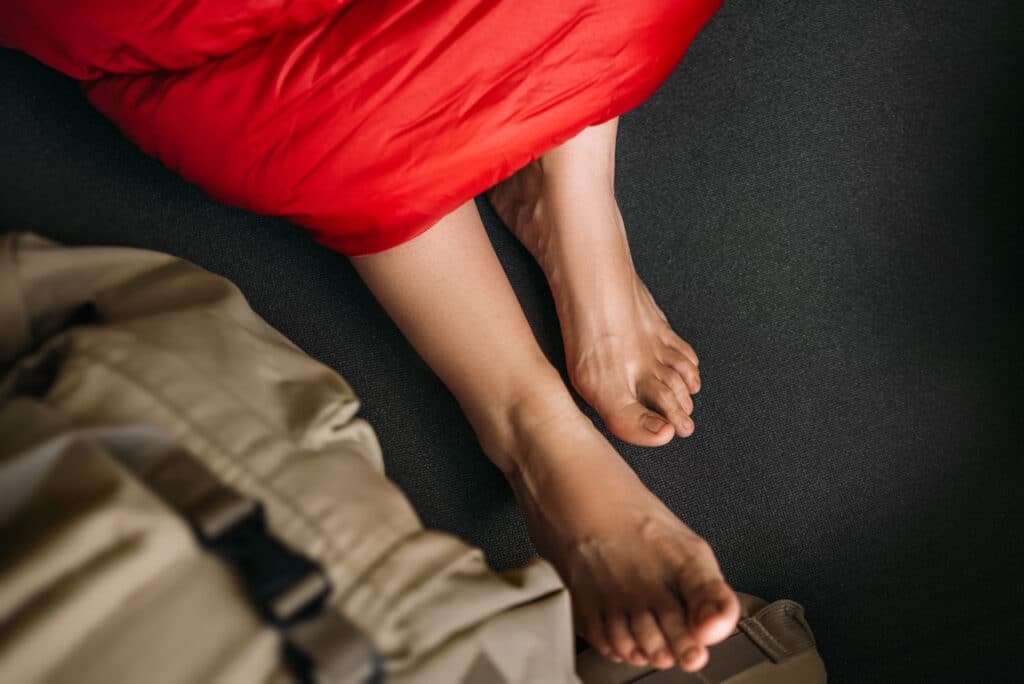
The management of lifelong challenges associated with Restless Legs Syndrome may necessitate the development of coping strategies and the pursuit of support from others. Each individual’s experience with RLS is unique, and finding what works best for you may involve trial and error, patience, and persistence.
Connecting with others who understand the challenges of living with RLS, either through support groups or online forums, can provide invaluable emotional support and practical advice. Sharing your experiences and learning from others can help you develop effective coping strategies, build resilience, and ultimately improve your overall quality of life.
Preparing for a Doctor’s Appointment
Preparation for a doctor’s appointment to discuss RLS symptoms entails:
- Gathering all pertinent information to facilitate an accurate diagnosis and the formulation of an effective treatment plan
- Documenting your symptoms, their frequency and intensity, and any factors that seem to trigger or worsen the symptoms
- Providing your healthcare provider with a detailed medical and family history
- Providing information about any medications or substances that may be affecting your RLS
By being prepared with this information, you can help your healthcare provider gain a comprehensive understanding of your condition and develop a personalized treatment plan tailored to your needs. Remember, open communication with your healthcare provider is vital in managing RLS and achieving the best possible outcomes.
RLS Research and Clinical Trials
Engagement in clinical trials and maintaining awareness of Restless Legs Syndrome research can enhance care and treatment options for those impacted by the disorder. Clinical trials are studies that help researchers learn more about disorders and evaluate the safety and effectiveness of new and existing treatments. By participating in clinical trials, you can contribute to the advancement of RLS research and potentially benefit from cutting-edge therapies not yet available to the general public.
National Institute of Neurological Disorders and Stroke (NINDS) is a primary federal agency that supports research on Restless Legs Syndrome. To stay informed about RLS research and clinical trials, you can access the NIH RePORTER, a searchable database containing information on current and past funded research projects and their results.
By staying engaged with RLS research, you can help make a difference in the lives of those living with this challenging condition.
Summary
Restless Legs Syndrome is a complex and often misunderstood neurological disorder that can significantly impact the quality of life for those affected. By understanding the causes, symptoms, and treatment options available, individuals with RLS can take control of their condition and work towards achieving better sleep and improved overall well-being.
Remember, managing RLS is a lifelong journey, and with the right support, resources, and determination, a happier and more restful life is within reach.
Frequently Asked Questions
What triggers restless legs syndrome?
RLS is often caused by a combination of genetic factors and low iron in the brain, as well as an underlying dysfunction in a part of your brain responsible for movement.
How do you calm down restless legs?
Calming down restless legs can be done with different strategies, such as getting up to stretch or walk, massaging, and applying warm or cold compresses. Establishing good sleep hygiene habits is also essential for relieving RLS symptoms.
What vitamin is lacking with restless legs syndrome?
It appears that people with restless legs syndrome (RLS) may have lower levels of Vitamin D, which has been linked to more severe symptoms and depression. Treatment of vitamin D deficiency may improve RLS symptoms, but further research is needed.
Is restless legs syndrome a form of anxiety?
Yes, RLS can be a symptom of anxiety and depression, and certain types of antidepressant drugs can worsen RLS symptoms.






